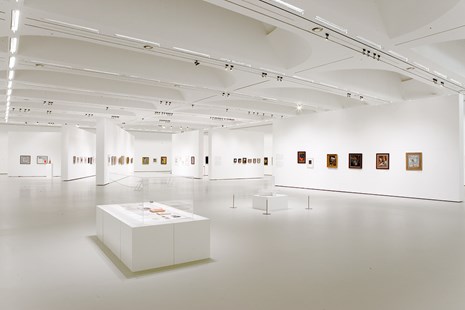Vytautas Kairiūkštis and His Milieu

Vytautas Kairiūkštis and His Milieu
Several landmarks in 20th-century Lithuanian art are associated with the figure of Kairiūkštis and his work. In collaboration with the famous Polish painter Władisłav Strzemiński, he organised and participated in the New Art Exhibition (Wystawa Nowej Sztuki) in May 1923 in Vilnius. This exhibition ushered in to Vilnius the avant-garde art of the day, revealing examples of Cubism, Suprematism and Constructivism. Works by Kairiūkštis, especially from his earlier period, are the most prominent examples of Lithuanian avant-garde art, unparalleled by any of his contemporaries in Lithuanian art. During the interwar years, he enjoyed links with international art movements, with avant-garde groups and their members, and their publications, which was unusual for local artists. Kairiūkštis' milieu was international and varied: Polish, Russian and Italian avant-garde artists and editors of avant-garde publications, including, besides Strzemiński, Henrik Stażewski, Mieczysław Szczuka, Karol Kryński, Teresa Żarnower, Wanda Chodasiewicz-Grabowska, Kazimir Malevich, Enriko Prampolini, Filippo Tommaso Marinetti and Gustavs Klucis. He was in touch with Lithuanian avant-garde writers and poets who congregated around theKeturi vėjai(Four Winds) literary almanac, primarily with Juozas Tysliava. He built up a large and valuable library of avant-garde publications, receiving most help in this from Paulius Galaunė, a friend of his since their first meeting in Moscow. Kairiūkštis was a superb pedagogue, with his own system for teaching art. Through his efforts, a drawing studio operated at the Vytautas Magnus Gymnasium in Vilnius between 1922 and 1928. It was for the pupils of the school who were the most talented in art, and was attended by Vladas Drėma, Balys Macutkevičius, Antanas Butkūnas, Stasys Kucka, and others. In the autumn of 1921, after settling in Vilnius, he started writing articles on art criticism and gave public lectures, advocating, above all, the aims and advantages of the new art. But gradually, he shifted to the study of older periods in the history of art, first of all the Renaissance, and also conducted research into the work of M.K. Čiurlionis.
The paintings, drawings, photomontages and multiple sketches by Kairiūkštis reveal him as an artist open to innovation, capable of blending the principles of the avant-garde with the language of Classical art. He demonstrated a special fondness of the motif of bathing or seated women, which recurs often in his paintings, drawings and sketches. A subtle, luminous colour scheme, thin-layered textures, and soft and smooth brushwork are distinctive qualities of his style, preserved across different periods and their predominant stylistic modes. In this respect, he was an aesthete who applied the same standard to both his colleagues and his pupils.
The creative endeavours of Kairiūkštis yielded innovative results which reflected the spirit of the day. He worked hand in hand with the international avant-garde, and succeeded in inscribing his name in the vocabulary of European art, in exhibition catalogues and in publications.
Exhibition curator: Viktoras Liutkus
Exposition designers: Aleksandras Kavaliauskas, Saulius Valius
Main sponsor: Insurance company BTA
Sponsors: Culture support foundation of the republic of Lithuania, The institute of Poland in Vilnius, Vilnius city municipality, Lithuanian Railways
Media sponsors: Lithuanian National Radio and Television, in your pocket, Delfi
Exhibition lenders:
Latvian National Museum of Art, Riga
Lithuanian Archive of Literature and Arts
Institute of Lithuanian Literature and Folklore
Martynas Mažvydas National Library of Lithuania
Muzeum Sztuki w Łodzi
Maironis Lithuanian Literature Museum
M. K. Čiurlionis National Art Museum
Muzeum Narodowe w Warszawie
Vilnius Academy of Arts
Collectors: Edmundas Armoška, Marija Drėmaitė, Ingrida Korsakaitė, Pranas Morkus


